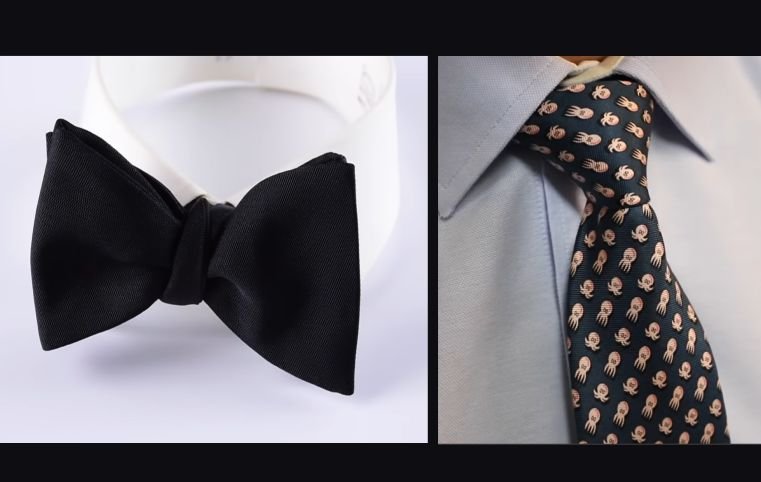Last updated on March 4th, 2025 at 12:02 pm
Get familiar with tie etiquette, from selecting the perfect necktie or bow tie for any occasion to understanding the appropriate knot styles and tie lengths.
Ties have a sacred place in men’s fashion and have maintained it, evolving little into modern times.
Gentsways has knotted this guide to cover historical context, modern practices, and tips for maintaining your ties.
Also, we will teach you the significance of ties in formal environments and how they can improve your professional image.
You will also be roped into the art of black tie attire and discover how to coordinate ties with your outfits.
With practical insights into tie accessories and caring for your ties, you’ll master the art of dressing with refinement and style.
Recommended: Complete Guide to Men’s Shoes
You Might Want to Pin the image below.
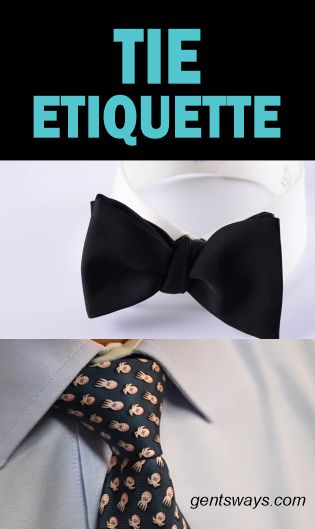
Key Takeaways
- Tie etiquette adds crispiness to formal attire, influencing your image in social and professional environments for a polished appearance.
- Bow ties are reserved for formal events, but can also be stylish in casual settings with individuality.
- The Windsor knot, known for its symmetry, is ideal for formal occasions, adding authority and refinement to your look.
- Ties should coordinate with your outfit, balancing patterns, colors, and textures to create a cohesive appearance.
- Black tie attire demands a tuxedo, bow tie, and dress shirt, reflecting elegance and adherence to traditional formalwear.
Table of Contents
- Key Takeaways
- Introduction to Tie Etiquette
- Tie Etiquette
- Bow Tie Etiquette
- Black Tie Etiquette
- Black Tie and Black Tie Optional Dress Code
- Choosing the Right Tie for the Occasion
- Tie Length and Width Rules
- Knot Styles and Their Appropriateness
- Tie Patterns and Colors
- Tie Accessories
- Maintaining and Caring for Your Tie
- Frequently Asked Questions
- Final Words from Gentsways
Introduction to Tie Etiquette
Tie etiquette is one of gentlemen’s etiquette every man should pay attention to. It includes the standards and practices associated with wearing ties, which include neckties, bow ties, and cravats.
While ties may seem to be merely an accessory, they are important in adding sharp edges to formal attire and establishing your image in whichever environment you find yourself in.
Obeying proper tie rules will up your appearance game mirroring an understanding of social codes, particularly in settings where formal dress is expected.
Recommended: Get Familiar with Men’s Suit
Brief History
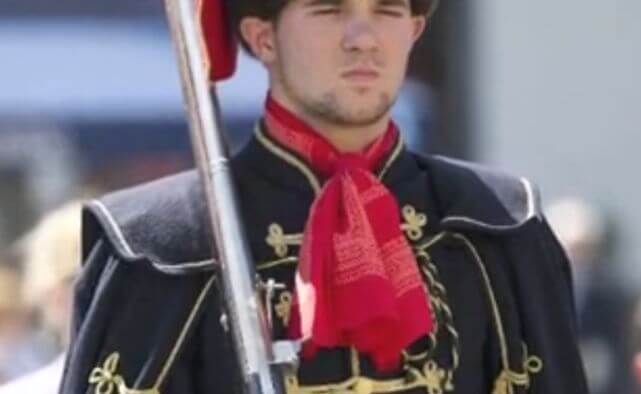
Tie etiquette is rooted in history and has evolved from its origins in the 17th century, when they were worn by Croatian mercenaries, to becoming an essential accessory of formal wear across the globe.
Throughout the years, the evolution of tie styles, including the necktie, bow tie, and cravat, has been influenced by cultural influences, fashion trends, and social norms.
Each type of tie carries its significance and communicates various messages about the wearer.
Recommended: How to Style Men’s Chinos
For instance, while a necktie is often associated with corporate settings, a bow tie may suggest a more relaxed or quirky personality.
Understanding tie etiquette is particularly important in today’s professional setting, where appearances can influence perceptions and opportunities.
In corporate environments, the correct choice of tie, coupled with appropriate knot styles, can denote respect and professionalism.
Meanwhile, social occasions that request black tie attire demand an even higher level of refinement, as the correct use of tuxedos and bow ties reflects the wearer’s recognition of the event’s decorum.
Mastering tie etiquette allows you to glide these settings with confidence, bringing connections and signaling your awareness of the underlying social fabric.
Recommended: Fashion Tips for Senior Men
Tie Etiquette

Choosing the Right Tie for the Occasion
A tie reflects your attention to detail and respect for the event. Vibrant silk suits social gatherings, while darker shades fit business meetings and formal occasions best.
Getting the Length and Width Right
Tie length matters, its tip should touch your belt. The width should complement your frame; slim ties suit lean builds, while broader styles balance a larger physique.
Selecting the Right Knot
The right knot enhances your presentation. The four-in-hand is versatile, fitting most settings. The Windsor is bold, symmetrical, and perfect for formal business or black-tie events.
Matching Colors and Patterns
Your tie should complement, not clash with, your outfit. Solid ties pair with patterned shirts, while subtle patterns work best on neutral backgrounds. Balance is always key.
Using Tie Accessories Wisely
Tie clips and pins add refinement, but moderation is essential. A well-placed tie clip secures your tie stylishly, while excessive embellishments can overwhelm your entire look.
Caring for Your Ties
Store ties properly, roll or hang them to prevent creases. Silk ties need dry cleaning, while wool or cotton varieties can handle gentle hand-washing for longevity.
Suggested: Men’s Intro to Grooming
Bow Tie Etiquette
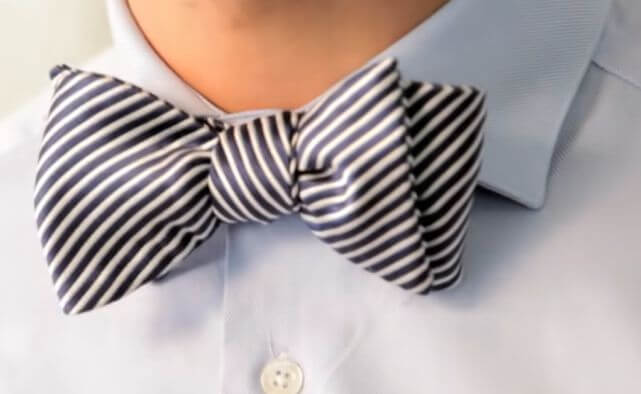
The bow tie has come a long way as a timeless accessory that has a rich history dating back to the 17th century.
As mentioned at the beginning, its origins can be traced to Croatian mercenaries who used a piece of cloth to hold their collars together.
Accidental fashion accessory, right?
Over the years, the bow tie has evolved into a symbol of gentlemanly refinement and style, distinguishing itself from the more common necktie through its silhouette and formal connotation.
Unlike neckties, which are often worn in a wider variety of settings, bow ties are typically reserved for formal occasions, yet they have found their way into casual and creative environments in modern society.
Related: What is Capsule Wardrobe?
Occasions for Bow Ties
Appropriate occasions for donning a bow tie include black tie events, wedding receptions, and charity functions.
But this does not mean you will be embarrassed when you wear it at other events. They can be accepted in less traditional contexts, such as art openings, themed parties, or even casual gatherings, where creativity and individuality are encouraged.
Understanding the setting helps, as the bow tie can make a bold statement while adhering to the desired dress code.
Recommended: Groom Wedding Plan Tips
Types of Bow Tie
There are several types of bow ties available, including:
- Pre-tied
- Self-tie, and
- Clip-on varieties
The self-tie bow tie is the most traditional option, allowing you to showcase your tying skills, which is an interesting part of bow tie etiquette.
To master the art of tying a bow tie, you should practice the classic butterfly style, ensuring a polished and symmetrical look.
When choosing colors and patterns, it is a good practice to consider the formality of the event; solid colors tend to be more acceptable for formal occasions, while playful patterns and vibrant hues can add a personal touch in more relaxed settings.
Recommended: Introduction to Beard Styles
Black Tie Etiquette
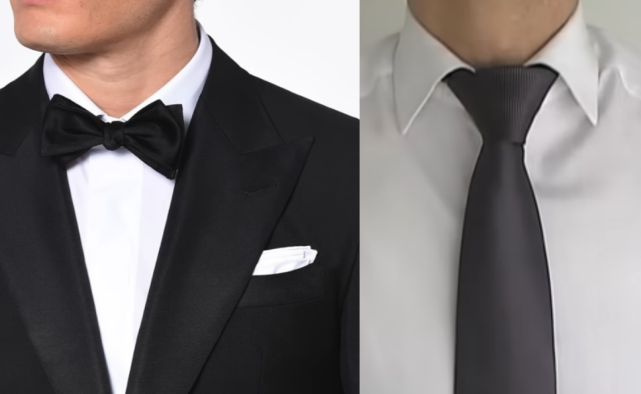
Black tie attire is a dress code synonymous with elegance and refinement, predominantly observed during formal events such as galas, weddings, and receptions.
Originating in the mid-19th century, its role in men’s fashion has evolved, moving away from daytime tailcoats and formal attire of that era to a more streamlined look, even for evening wear.
The recognized components of black tie attire include:
- The classic tuxedo
- A bow tie, and
- A formal dress shirt
The Tuxedo
The tuxedo, typically characterized by a satin or grosgrain lapel, should be paired with a black bow tie, which is a central accessory for the ensemble.
A White Dress Shirt
A white dress shirt with a wing or lay-down collar enhances the formality of the outfit, while a cummerbund or waistcoat in black is often worn to complete the look.
Cufflinks
Additionally, cufflinks and studs can serve as optional accessories that contribute to the polished appearance and also provide an opportunity for personal expression.
These elements combined create a balanced and refined appearance suitable for black-tie occasions.
Related: Types of Men’s Blazer Outfits
Black Tie and Black Tie Optional Dress Code
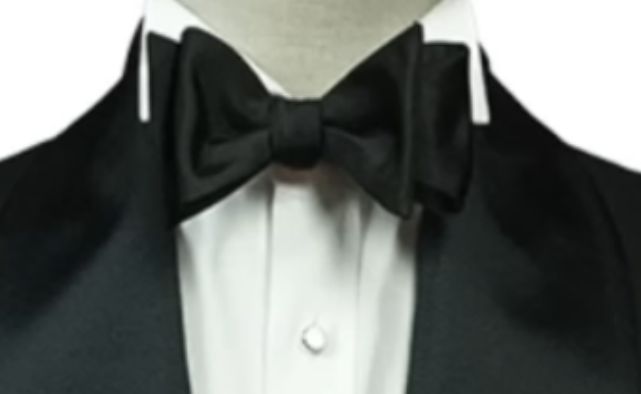
Also, there is an underlying distinction between a black tie and black tie optional dress code.
Black tie optional allows for slight variations, where guests may opt for a dark suit and tie rather than a tuxedo.
It is worthy of mention that while the black tie optional dress code permits such modifications, it is advisable to still aim for a level of formality that aligns closely with traditional black tie attire.
Bow Tie or Necktie?
When attending black tie events, the choice between a bow tie and necktie should lean towards the former, as the bow tie has become a standard element of this elegant dress code.
Understanding and adhering to these guidelines is important for making the right impression at formal gatherings.
Related: Introduction to Men’s Haircuts and Styles
Choosing the Right Tie for the Occasion
Selecting the appropriate tie involves understanding the nature of the event and how your choice complements your overall attire.
The first step in this process is categorizing the event as:
- Formal
- Semi-formal, or
- Casual
….which ultimately dictates the appropriate style of the tie.
Formal Occasions
For formal occasions, such as weddings or business meetings, silk ties in solid colors or subtle patterns are ideal.
Darker hues convey a sense of professionalism and elegance, enhancing the formal tone that such events require.
Semi-formal Occasions
Semi-formal events allow for slightly more creativity. In these instances, you can opt for ties with bolder patterns or brighter colors, provided they harmonize with your suit.
For example, a vibrant paisley tie can work beautifully with a navy suit, while still maintaining a refined look.
Textures, such as knitted or wool ties, can also be incorporated to add a distinct visual element, striking a balance between casual and formal attributes.
Casual Events
Casual events provide the most freedom in your tie selection. Here, fabric options can include cotton or linen, allowing for a relaxed appearance.
Printed or character-themed ties might also be suitable, reflecting personal interests or humor.
Nevertheless, you should ensure that the colors or patterns align well with the attire to avoid clashing.
The tie should serve as a complement, enhancing your overall appearance without being at the center of attention.
Coordination between the Tie and Fabric
In any scenario, coordination between tie and suit fabric is essential. For instance, pairing a textured tie with a smooth-surfaced suit can create visual dissonance, while matching textures can add depth and dimension to your look.
Therefore, understanding these subtleties in tie selection will contribute to achieving a polished appearance tailored to the specific occasion.
Related: Styling Tips for Men’s Denim Jackets
Tie Length and Width Rules
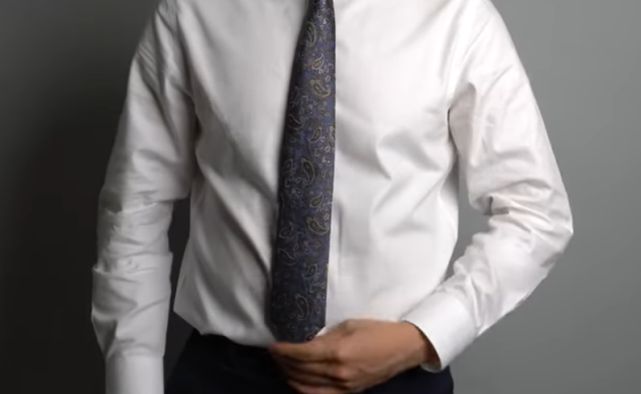
Getting the right tie length is key to looking well-dressed. A tie that’s too long or too short can throw off your entire look.
- The tip of your tie should land near the top of your belt buckle when standing straight.
- If you’re taller, you may need an extra-long tie to maintain this proportion.
- If you’re shorter, a standard or shorter tie works best to keep things balanced.
Try different lengths in front of a mirror to see what works best for your height and outfit.
Tie Width: Matching Your Build and Suit Lapel
Tie width plays a big role in your overall appearance. The right width should complement both your body type and suit lapel.
Body Type
- Broader builds look better with wider ties, creating a proportional balance.
- Slimmer frames should go for narrower ties to maintain a sleek look.
Suit Lapel Width
- Wide lapels pair well with wider ties.
- Narrow lapels work best with slimmer ties.
A mismatch between your tie and lapel width can make your outfit look off-balance, so pay attention to these details.
Choosing the Right Tie for the Occasion
Ties aren’t just about style—they also send a message. Picking the right one depends on where you’re going and what you’re wearing.
- Formal Events – Stick to classic, refined ties with a standard width.
- Business Settings – A medium-width tie in a solid color or subtle pattern works best.
- Casual Outfits – Feel free to experiment with textures, patterns, and slimmer widths.
Next time you put on a tie, check its length, width, and how it fits the occasion. These small details can make a big impact on your overall style.le casual settings may allow for wider ties with more adventurous patterns.
Knot Styles and Their Appropriateness
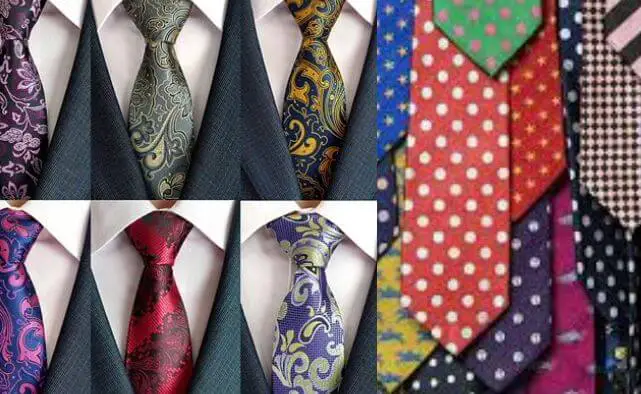
The art of tying a tie covers man knot styles, each taking care of different occasions and personal preferences.
Among the most popular knots are the:
- Four-in-hand
- Windsor, and
- Half-Windsor knots
…which serve different purposes in terms of formality and style. Understanding when to utilize these knots can significantly improve your attire, making a statement in both professional and social settings.
Four-in-hand
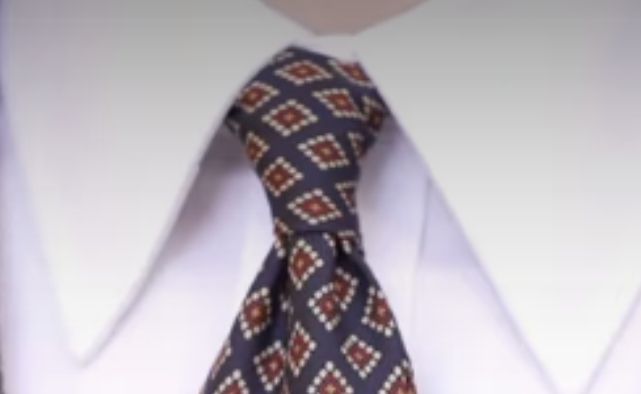
The four-in-hand knot is perhaps the simplest and most commonly used knot. This knot is known for its slight asymmetry, making it appropriate for casual and semi-formal occasions.
It is particularly well-suited for job interviews or everyday office wear where a polished yet approachable look is desired.
Its flexibility makes it a go-to choice for those who appreciate a laid-back elegance.
Full Windsor Knot
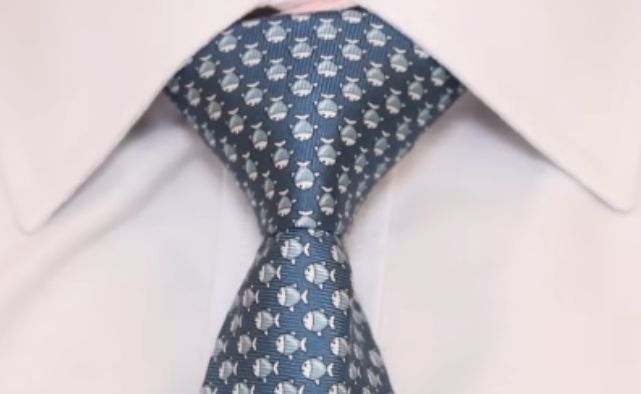
On the other hand, the Windsor knot is synonymous with formality. Characterized by its wide and symmetric shape, it is ideal for formal events such as weddings, galas, or high-profile business meetings.
The Windsor provides a commanding presence, making it an excellent choice for those aiming to convey authority and refinement.
When paired with a spread collar shirt, this knot enhances the overall aesthetic, establishing a strong visual impact.
Half Windsor Knot
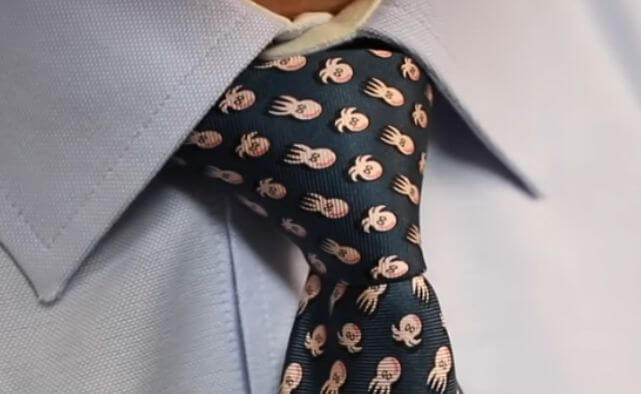
The half-Windsor knot offers a balanced approach between the four-in-hand and the full Windsor.
It is less bulky than the Windsor, making it suitable for various settings, from business meetings to formal dinners.
Its beauty lies in its ability to work well with different shirt collars, striking a balance between professionalism and modern flair.
When selecting a knot for an occasion, consider both the formality of the event and your style.
This choice impacts your appearance and reflects your attention to detail and professionalism.
Tie Patterns and Colors
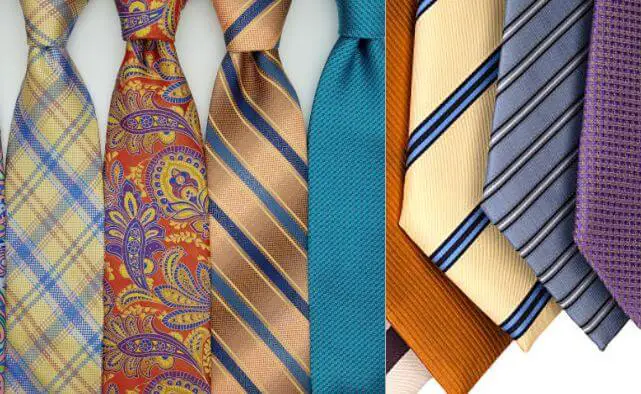
Most men focus on tie patterns and colors but overlook key etiquette rules that affect their overall look.
A well-chosen tie completes an outfit, while the wrong choice can throw everything off.
Understanding Patterns and Colors
Ties come in many designs, from bold and striking to subtle and refined. The key is finding a balance that fits the setting and complements your style.
Solid Colors
For formal events, solid ties or simple patterns work best. Classic shades like navy, burgundy, and dark green pair well with most suits, giving you a polished appearance.
Patterns
For casual or semi-formal settings, patterned ties—such as stripes, paisley, or checks—add personality. The trick is moderation. A bold tie should enhance your outfit, not overpower it.
Matching Ties with Shirts and Suits
Use the color wheel as a guide:
- Patterned ties pair well with solid shirts for a balanced look.
- Solid ties can complement patterned shirts without clashing.
- Polka dots, stripes, or geometric prints contrast well against white or light blue shirts.
- If wearing a patterned shirt, choose a more subdued tie to keep your outfit harmonious.
Choosing the Right Colors
- Complementary colors (opposite on the color wheel) create contrast and draw attention.
- Analogous colors (next to each other on the color wheel) create a seamless, coordinated look.
A carefully selected tie doesn’t just complete your outfit, it reflects your personal style and attention to detail.
Tie Accessories
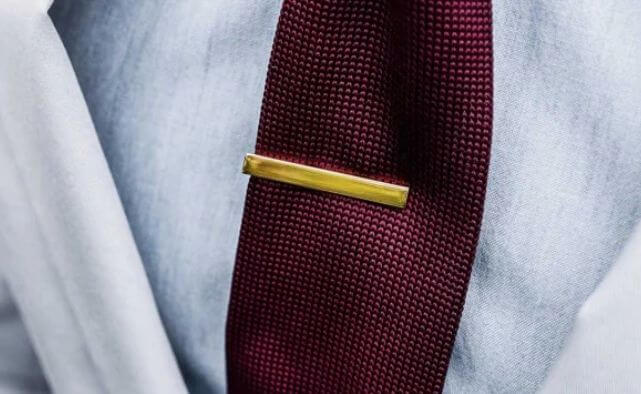
Adding tie accessories like tie bars, clips, and pins isn’t just about keeping your tie in place, they also add personality and polish to your look. The key is knowing when and how to wear them.
The Tie Bar
A tie bar keeps your tie from swinging and adds structure to your outfit. To get the right fit, choose one that’s about two-thirds the width of your tie.
Clip it between the third and fourth buttons of your shirt, any higher or lower throws off the balance. If you’re wearing a bow tie, skip the tie bar. It’s unnecessary and out of place.
Tie Clips
Tie clips work like tie bars but give you more room for personal expression. They come in different designs, so pick one that complements your tie and outfit.
A sleek metal clip keeps things classic, while a unique shape or engraving can add personality.
Tie Pins
Tie pins are bold and best suited for formal occasions. They pierce the fabric, making them ideal for ties with a heavier texture.
If you wear one, make sure it enhances your suit rather than overpowering it. A subtle yet stylish pin can be a conversation starter without stealing the spotlight.
Wearing the right tie accessory can sharpen your look and show attention to detail. Stick to these simple guidelines, and your outfit will always look well put together.
Maintaining and Caring for Your Tie
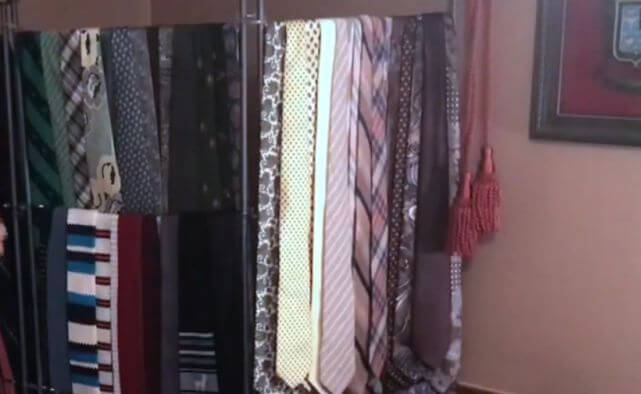
aking care of your ties isn’t complicated, but it makes a big difference in how they look and last. Whether you prefer classic neckties or stylish bow ties, proper cleaning, storage, and handling keep them in top shape.
Storage
Storing your ties the right way prevents wrinkles and helps them maintain their structure. Hanging them on a tie rack is the best option since gravity naturally smooths out creases.
No rack? No problem. Roll your tie gently from the narrow end to the wide end and store it in a drawer or a protective box. This keeps it from getting crushed and helps it hold its shape.
Cleaning and Pressing: Keeping Your Ties in Top Shape
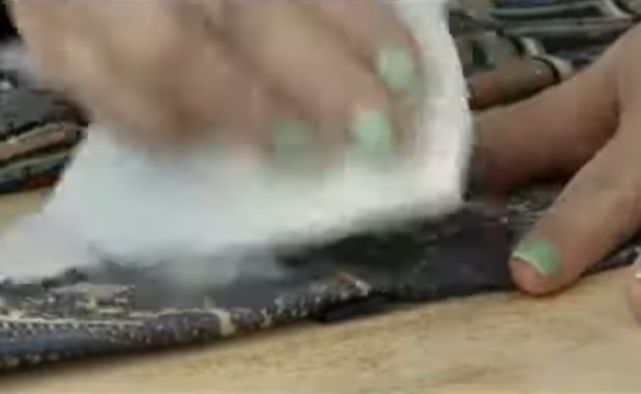
Cleaning your ties the right way keeps them looking fresh without damaging the fabric. The method depends on the material:
- Silk ties should be dry-cleaned to avoid fading or distortion. For small stains, gently dab a fabric-safe spot cleaner with a soft cloth—never rub, as it can ruin the fibers.
- Cotton and linen ties can sometimes be hand-washed in cold water with mild detergent. Lay them flat to dry to maintain their shape. Avoid machine washing, as it can cause shrinkage or fraying.
Ironing
Wrinkles can ruin the look of a tie, but pressing them requires care. Use a low-heat iron with a steam setting or place a pressing cloth between the iron and the fabric to prevent burns or unwanted shine.
With the right care, your ties will always look crisp and ready for any occasion.
Frequently Asked Questions
Do you wear a tie or bow tie to a black-tie event?
You wear a black bow tie to a black-tie event, typically accompanying a tuxedo, not a regular tie.
What is the protocol for a black-tie event?
A black-tie event requires a tuxedo, black bow tie, formal shoes, and typically a white dress shirt, exuding formal elegance and sophistication.
At what events do you wear a bow tie?
Wear a bow tie at formal occasions like black tie events, weddings, galas, or any event calling for a tuxedo or evening attire.
What are the rules for wearing a bow tie?
Bow ties should complement the occasion; formal events demand solid black or white, while casual settings allow for more playful, colorful designs.
Final Words from Gentsways
In conclusion, mastering tie etiquette, whether it’s for neckties, bow ties, or black-tie events makes your style and professionalism shine through.
By selecting the right tie for each occasion, ensuring proper length and width, and perfecting knot styles, you demonstrate an understanding of refined dressing.
Coordinating colors, patterns, and accessories further enhances your ensemble, allowing you to stand out in any setting.
With this knowledge, you can confidently navigate formal events and daily professional environments, exuding elegance and attention to detail.
References:
- https://www.bowties4him.co.uk/bow-tie-guide/bow-tie-guide/how-to-combine-a-bow-tie-with-a-dress-code/
- https://www.highcottonties.com/blogs/high-cotton-times/black-tie-etiquette-cc
- https://savilerowco.com/blogs/news/everything-you-need-to-know-about-bow-ties
- https://hespokestyle.com/black-tie-rules-for-weddings/
- https://generationtux.com/blog/event-guides/what-not-to-wear-to-a-black-tie-event
Pyo Merez is a men’s lifestyle enthusiast and writer about the gentleman’s place and impact on society. Raised by a distinguished gentleman dad, he offers unique insights into how the mind of a gentleman works and how societal norms shape gentlemen’s identity and vice versa.
Through his insightful articles, Pyo taps into the depths of gentleman culture to provide perspectives on etiquette and manners in modern society.
